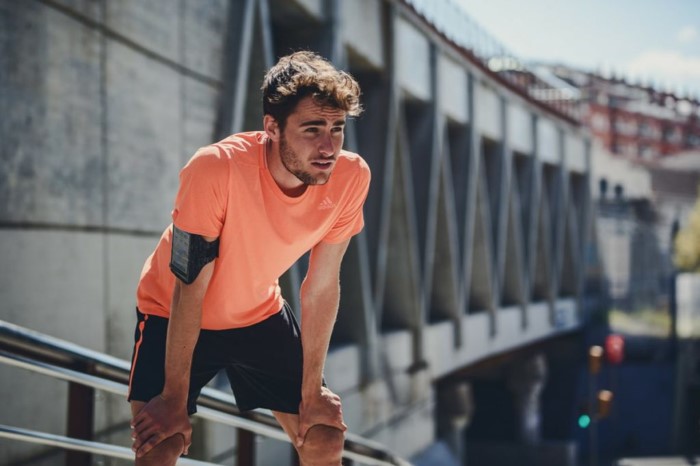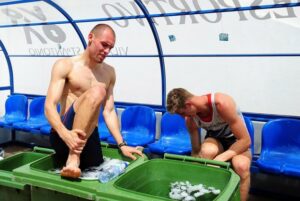
08 Jun The Single Most Effective Hack To Recover Faster
With hours of training, and sometimes taking it to the extreme, some athletes don’t fully realize that their muscles are doing a BIG effort to stay ‘afloat’.
After exhausting physical demands, your muscle tissue will suffer micro-tearing which will then repair and regenerate itself through mechanisms of self-healing and self-preservation.
Yes, your body is intelligent enough to do this; but still suffers, and full recovery of the tissue takes longer than we think.
High level athletes are relying more and more in this recovery hack to speed up their recovery process, and there is a reason for that. Not only their salaries demand their bodies to be treated like machines, but also the frequency of their physical demands (between training and games) makes them look for ways to speed up recovery and be ready for the next challenge.
If you feel like your training routine is putting you to feel the aftermath of pain and soreness every time, leading to extended recovery periods, there can be a way to help your body recover faster: cold therapy.
“Cold therapy is a proven and broadly used technique among top athletes to effectively recover faster.”
What happens to your body after workout
In the hours following exhausting workouts, your body will simply trigger inflammatory and pain responses due to supercompensation of the fibers in your muscles to cope with the high physical demand and trying to heal themselves.
Why cold helps
Simply put, cold in your body causes ‘vasoconstriction’. This is the narrowing of blood vessels that will causes blood flow to slow, and in consequence, to slow down or block inflammation responses. ‘Cold’ will reduce the leakage of tissue fluid and hence swelling.
Overall, vasoconstriction is a normal process and it helps keep your body in healthy balance. Cold also has a ‘numbing’ effect which helps reduce soreness in affected muscles after exhausting routines. The simple fact of reducing blood flow will moderate pain responses by a slower spread of nerve pain signals.
In summary, cold therapy:
- Controls inflammation
- Reduces pain
- Speed up recovery
- It is a non-invasive natural treatment
- Helps avoid pain meds
- Phycological benefit: improves well-being and relaxation
In broad terms, cold therapy can be:
- Localized (knee, shoulder, ankle) via ice wraps
- Zone (e.g. extremities) via cold bath, tub, barrel
- Full body via cold tub, liquid nitrogen, or even a shower
While localized cold therapy (e.g. knee ice wrap) will try to address area-specific injuries, other cold therapy such as bath, tub, barrel, and even shower is the protocol mostly used in athletes looking to speed up overall recovery.
For localized and injury related ‘cold’ therapy, a nice piece of equipment is the Aircast Cryo Cuff Cold Therapy (knee use).
This device provides a very nice focal compression, delivering chilled water directly to provide maximum cryotherapy. This device helps control swelling very effectively, and is ideal for pain, trauma, rehab, post training, and post injuries. A ‘nice-to-have’ device at home.

“Cold helps keep soreness and inflammation in check by constricting blood vessels and limiting the leakage of tissue fluid.”
Why cold bath/tub is the name of the game for top athletes
Cold bath, tub, or barrel will instill cold in a broader area (vs area-specific cold therapy) covering all muscles and joints that generally suffer the aftermath of exhausting physical demands: your legs (specially runners).
This will reduce soreness and will help recover faster. After the body leaves ‘cold mode’, it will regulate blood flow again into tissue which accelerates the healing and regeneration of tissue in your muscles while keeping inflammation and soreness in check.
**Barrels are widely popular since they offer the convenience of usage almost anywhere (you just need water and some ice).
This 55 gallon heavy duty can will cover the right amount of muscle area.

How to apply ‘cold’ therapy in a barrel
The recommended time is around 10-15 mins max at min temp of 55 degrees (F). This is just enough to provide the benefits of cold therapy. Note that your body will have peaks of inflammatory responses up to five hours after workouts, so there is no rush to cool-off if you can’t get to a tub or barrel right after action.
“Your body will peak inflammatory responses for up to five hours after workout. So you have plenty of time to cool-off”
In practical terms, taking a cold bath, tub, or barrel, can be super easy. All you need is water, some ice (no need to fill the whole bucket with ice), and the will for a faster recovery.
“A faster recovery can lead to better performance.”
Still a shower will do the job
In case a tub or barrel are not available, a simple cold shower can help tremendously. Your body can still get the effects of a ‘cold therapy’.
When taking a shower you can direct water in cold temperature towards your legs for a 8-10 minute period. This will have a great impact after your workouts helping speed up your recovery.
Cold showers are a quick and practical way to get the benefits of ‘cold therapy’ for better and faster recovery.
“A faster recovery can give you more miles down the road.”

Sorry, the comment form is closed at this time.